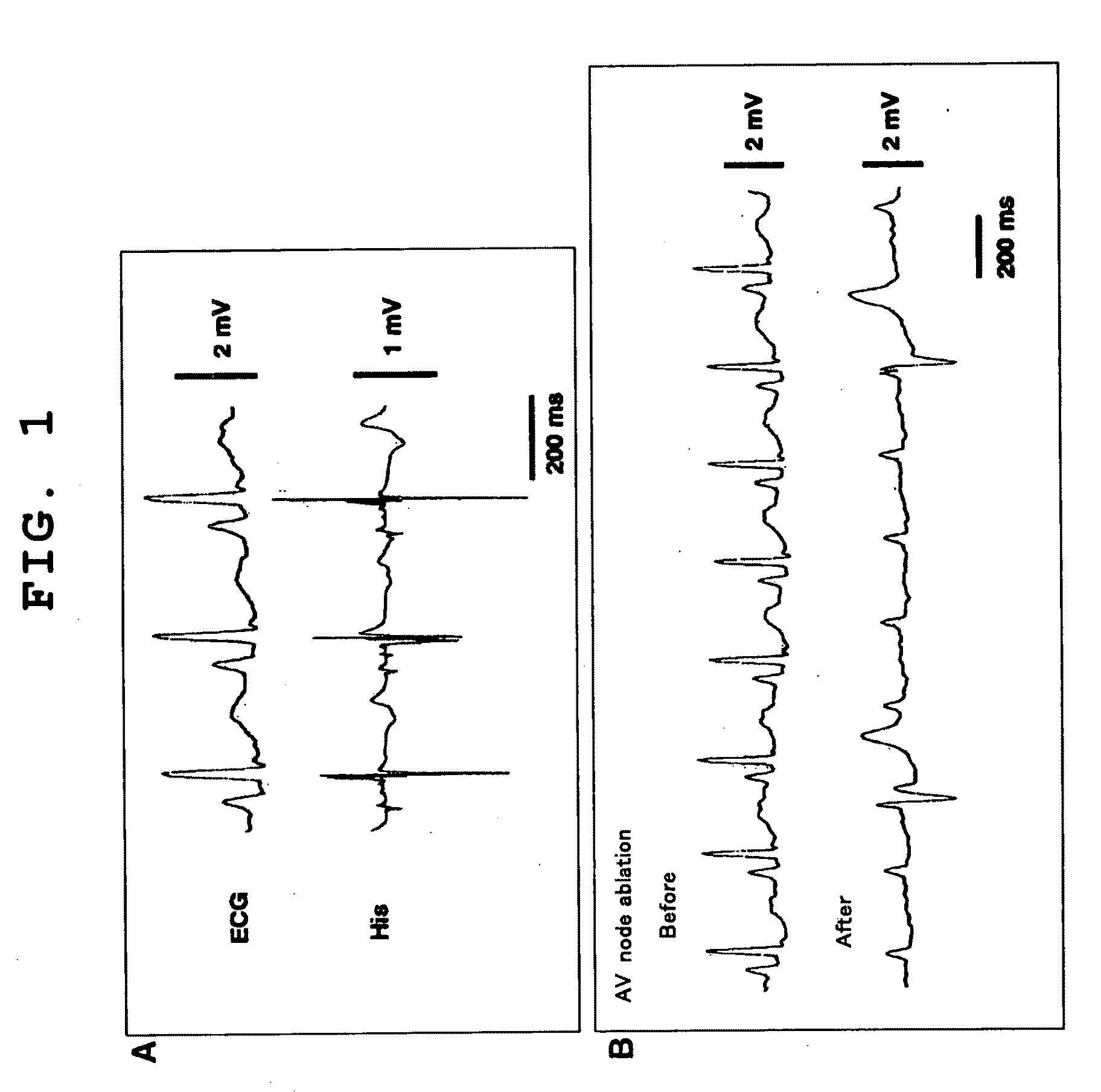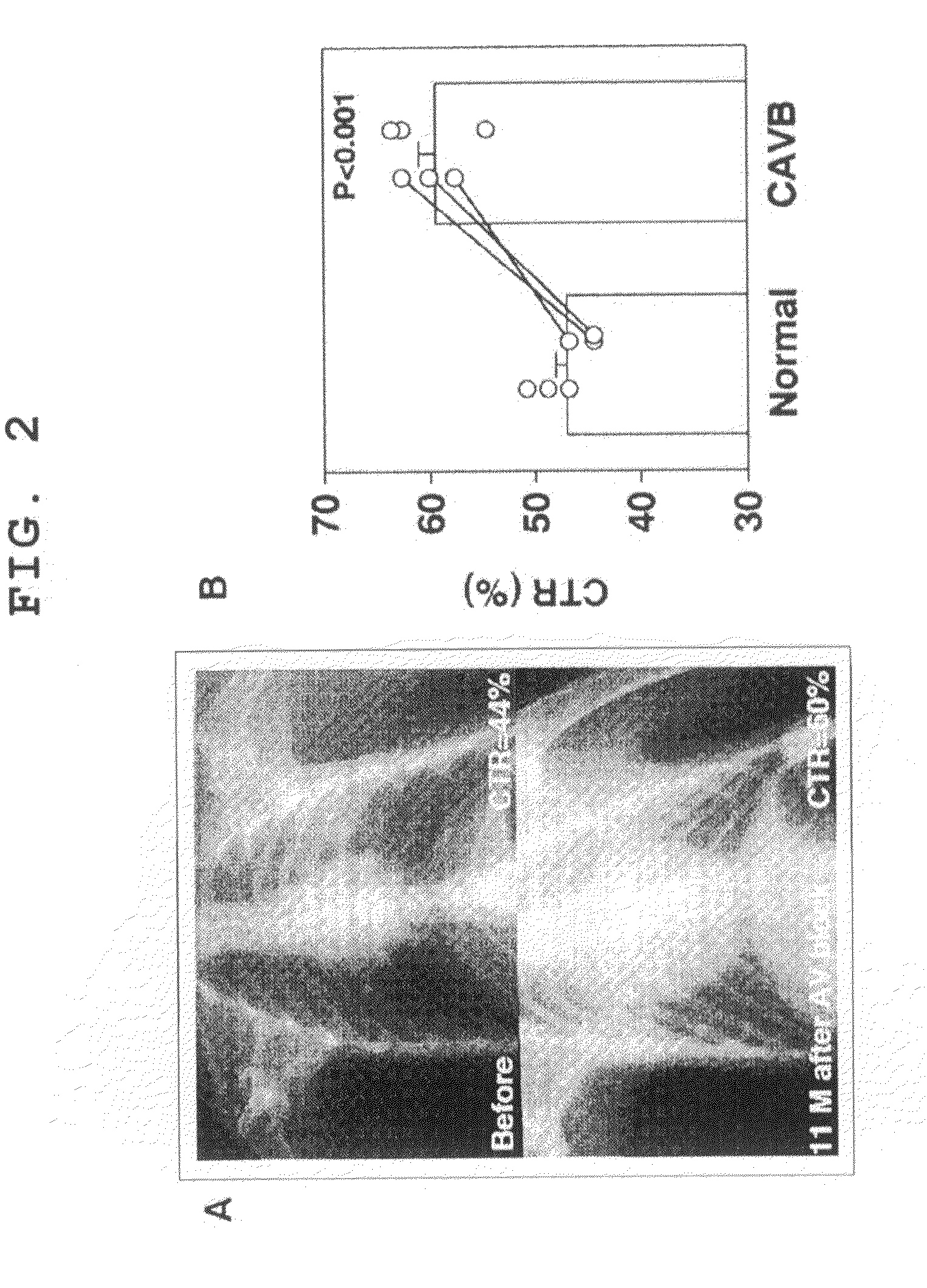Animal Model With Induced Arrhythmia
a model animal and arrhythmia technology, applied in the field of arrhythmia model animals, can solve the problems of difficult to predict the onset of drug-induced long qt syndrome, the above-described worst case of arrhythmic death occurring frequently all over the world, and the sudden death of a person who has been in ordinary social life a major damage not only to his or her family, but also to society and economy
- Summary
- Abstract
- Description
- Claims
- Application Information
AI Technical Summary
Benefits of technology
Problems solved by technology
Method used
Image
Examples
example 1
Generation of Proarrhythmia Monkey Model
[0046]Pentobarbital was gradually administered by intravenous injection to a male or female cynomolgus monkey at about 4 years after birth (about 3 kg) (30 mg / kg), simultaneously the trachea was intubated, and oxygen or the atmosphere was supplied in a given amount (10 to 20 ml / kg) using an artificial ventilator to achieve respiratory management. After the thigh was shaven and disinfected with alcohol-soaked cotton, a guide wire was inserted to the femoral vein, and an electrode catheter (6 French size) furnished with a pacing electrode attached to the tip thereof was inserted from the femoral vein to the right ventricle. In search of a position that allows the highest level of recording of His bundle electrocardiogram, the tip electrode was immobilized, and intracardiac electrocardiogram (His) was measured (FIG. 1A). At the same time, body surface electrocardiogram (ECG) was also measured (FIG. 1A). Next, from the tip electrode of the electro...
example 2
Evaluation of Cardiac Dilation in Proarrhythmia Monkey Model
[0047]The chests of male or female cynomolgus monkeys were radiographed, and the cardiothoracic ratios were measured. Next, ablation was performed, the chests of cynomolgus monkeys after elapse of about 12 months were radiographed, and the cardiothoracic ratios were compared. The calculation formula used was maximum transverse diameter of heart÷maximum transverse diameter of thoracic cavity×100. The results are shown in FIG. 2.
[0048]FIG. 2A shows a case in which the heart dilated due to surgery for making a complete atrioventricular block; the cardiothoracic ratio changed from 44% to 60%. FIG. 2B shows mean values of cardiothoracic ratios in six cases, including three cases in which the evaluation was made on the same animal; the cardiothoracic ratio increased statistically significantly due to the complete atrioventricular block. From this, it was demonstrated that the heart dilated as a result of a compensation mechanism ...
example 3
Physiological and Biochemical Examination of Proarrhythmia Monkey Model
[0049]Blood was drawn from normal cynomolgus monkeys (Normal) and chronic atrioventricular block monkeys obtained in Example 1 (CAVB, monkey spending about 2 months after ablation), and the concentrations of Aldosterone, Angiotensin II, PRA, Adrenaline, Noradrenaline, Dopamine, ANP, and BNP in the blood were measured according to conventional methods. The results are shown in FIG. 3.
[0050]As shown in FIG. 3, the chronic atrioventricular block monkeys had significantly higher values of noradrenaline, ANP and BNP than those in the normal monkeys. From this, it was found that the monkey model of the present invention had the sympathetic nervous system in an accentuated state, and had a sign of chronic heart failure.
PUM
 Login to View More
Login to View More Abstract
Description
Claims
Application Information
 Login to View More
Login to View More - R&D
- Intellectual Property
- Life Sciences
- Materials
- Tech Scout
- Unparalleled Data Quality
- Higher Quality Content
- 60% Fewer Hallucinations
Browse by: Latest US Patents, China's latest patents, Technical Efficacy Thesaurus, Application Domain, Technology Topic, Popular Technical Reports.
© 2025 PatSnap. All rights reserved.Legal|Privacy policy|Modern Slavery Act Transparency Statement|Sitemap|About US| Contact US: help@patsnap.com



